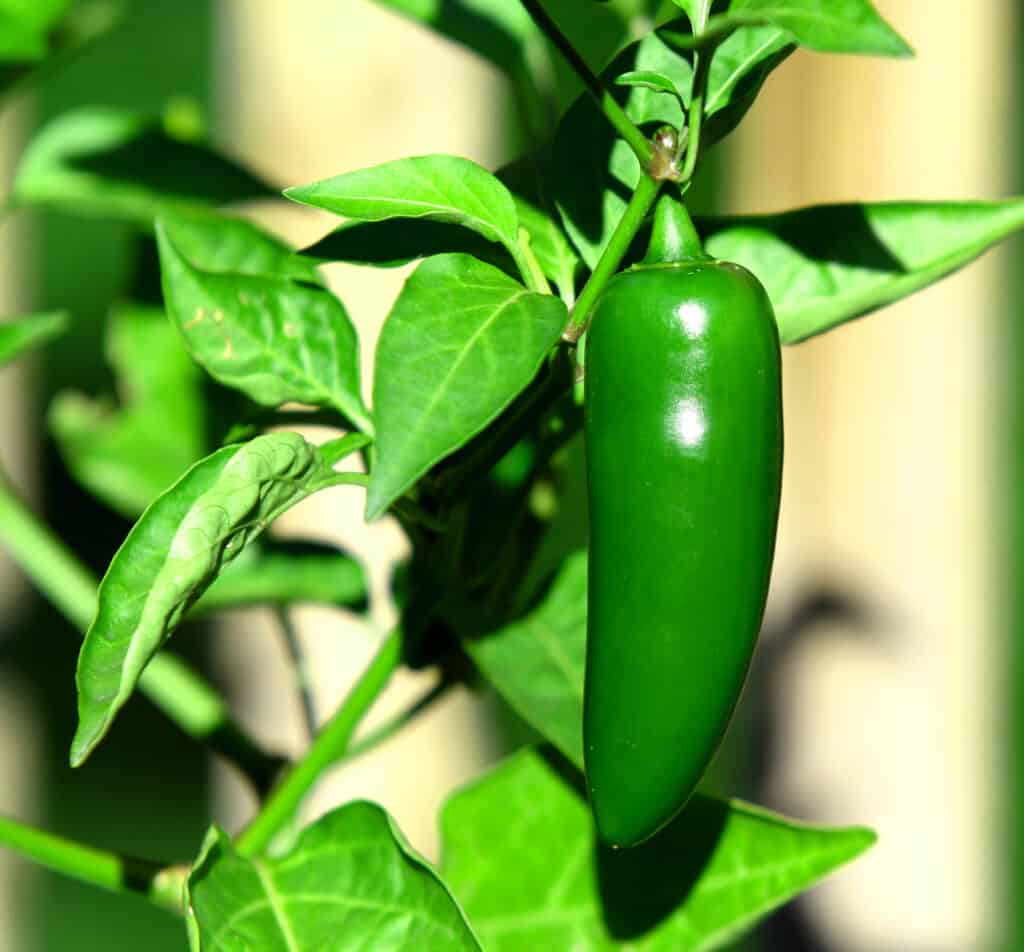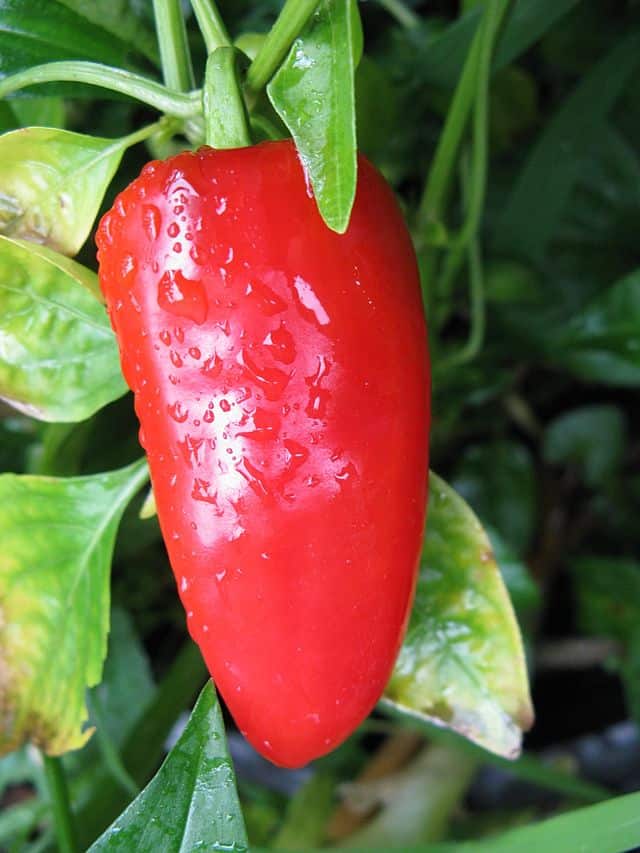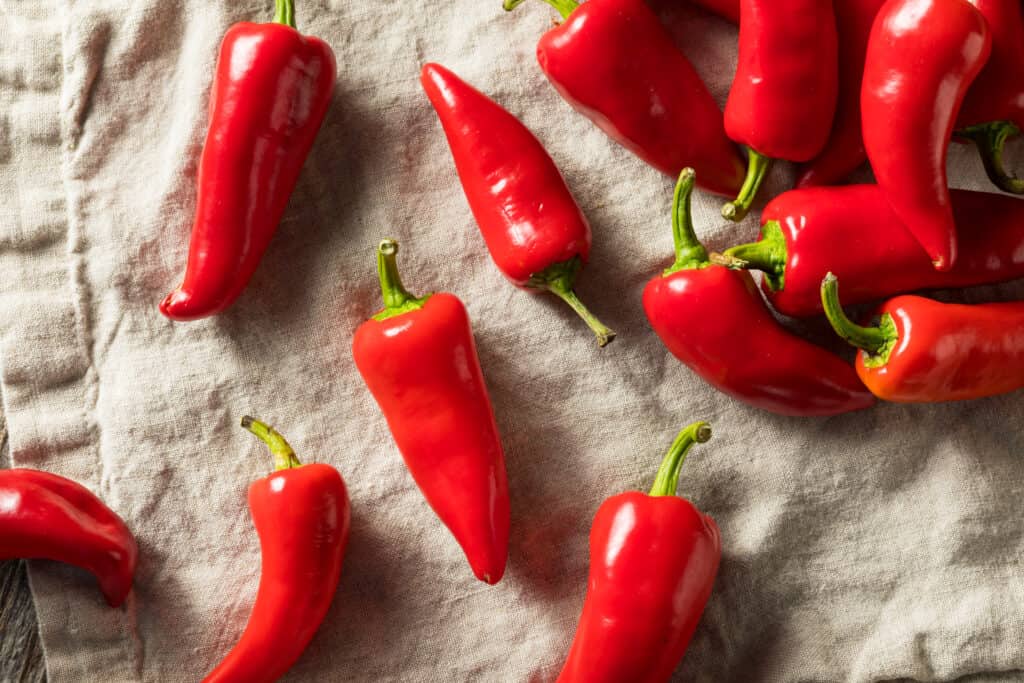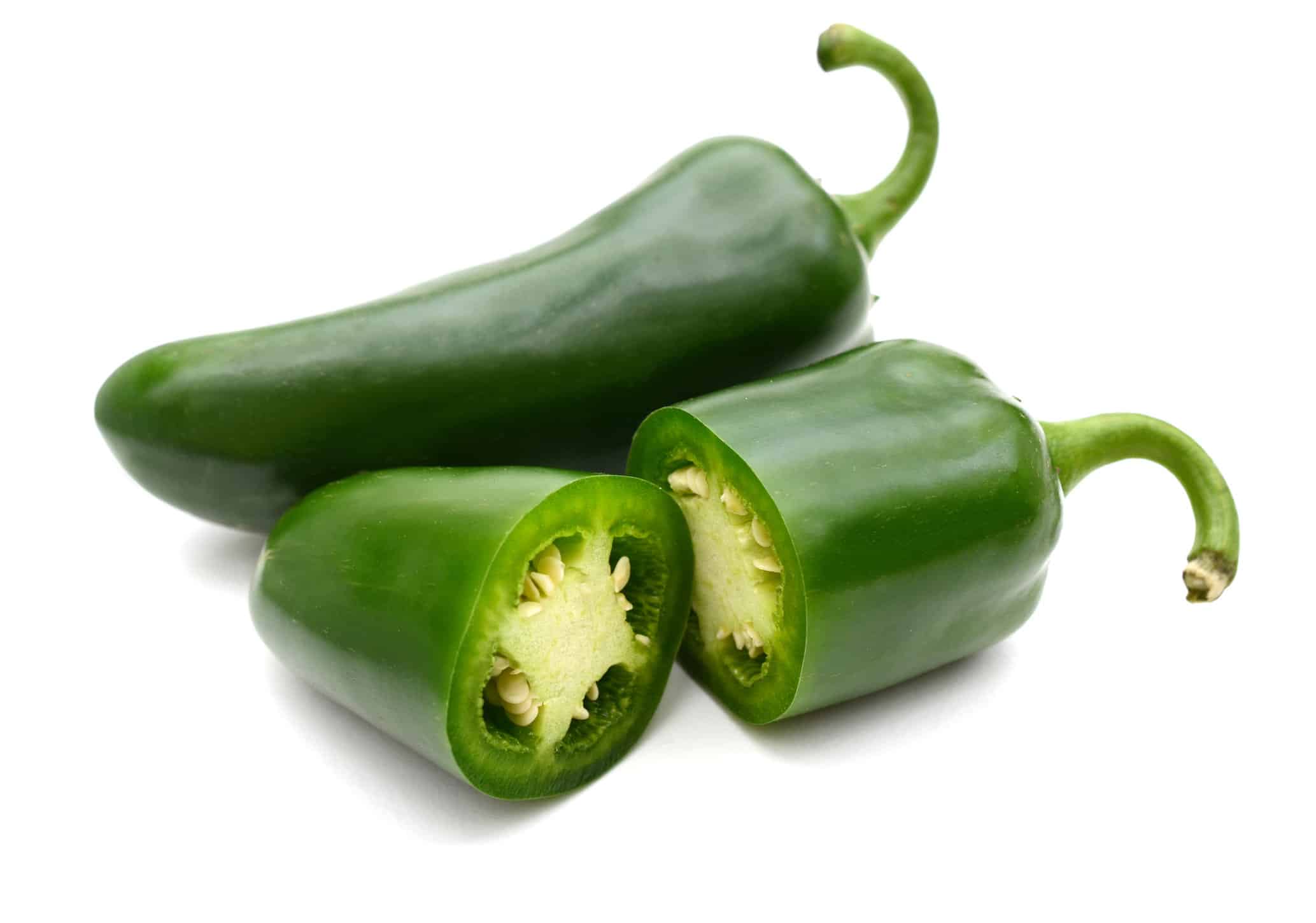Jalapeño peppers are one of the most common culinary ingredients for adding spice to a dish. However, the lesser-known Fresno pepper is quickly gaining in popularity as well! While these two peppers are nearly identical, several subtle differences set them apart. Let’s explore the similarities and differences between these two spicy delights to determine which is better for your kitchen and garden.

Jalapeño peppers are native to Mexico and Central America.
©iStock.com/Victor Ward
Fresno Pepper vs. Jalapeño: A Comparison
| Fresno Pepper | Jalapeño | |
|---|---|---|
| Classification | Capsicum annuum ‘Fresno chile’ | Capsicum annuum ‘Jalapeño’ |
| Origin | California, USA | Mexico and Central America |
| Description | Plants grow 2 to 3 feet tall and 16 to 18 inches wide. Mature peppers grow up to 2 inches long and 1 inch wide at the stem, with a tapered bottom. Ripe peppers are red with a smooth surface and a shiny, waxy sheen. Leaves are a rich green shade and oval-shaped. | Plants grow 2 to 3 feet tall and 16 to 18 inches wide. Mature peppers grow 2 to 3 inches long and one inch wide at the stem, with a tapered bottom. Ripe peppers are green with a smooth surface and a shiny, waxy sheen. They may turn red and become spicier if left on the vine past ripeness. Leaves are dark green and oval-shaped. |
| Uses | Traditionally used as a culinary spice. Notable dishes include ceviche, pasta sauces, and condiments like relish, salsa, and pickles. | Traditionally used as a culinary spice. Notable dishes include salsa, chili, moles, and jalapeño poppers. Red jalapeños are often used in sriracha. |
| Scoville Scale Rating | 2,500-10,000 SHU | 2,500 to 8,000 SHU |
| Flavor Profile | Smoky, saccharine, fruity | Vegetal, spicy, bitter |
| Growing Tips | Start seeds indoors 8-10 weeks before the last frost. Transplant into loamy soil in a terra cotta pot or garden with temperatures around 85° F. Requires full sun, frequent watering, and adequate drainage to prevent root rot. Prune the first leaves to prevent legginess. | Start seeds indoors 6-8 weeks before the last frost. Transplant to loamy soil in a terra cotta pot or garden with between 65 and 80° F. Requires full sun, frequent watering, and adequate drainage to prevent root rot. |
Fresno Pepper vs. Jalapeño: Key Differences
Fresno peppers and jalapeño peppers can often be confused with one another. While these plants look and feel similar, there are a few key differences.
Fresno peppers have a much different taste than jalapeño peppers. The Fresno tends to be sweeter and more versatile than the jalapeño, making it a common substitution in recipes.
The walls of the Fresno pepper are also slightly thinner, which contributes to the milder, sweeter taste. Jalapeño peppers are thicker and textured.
Fresno peppers are considered perfectly ripe when they’re red on the vine. Jalapeño peppers are fully ripe when they’re green — though they’ll turn red if you leave them for too long!

Fresno peppers are considered perfectly ripe when they’re red on the vine.
©https://commons.wikimedia.org/wiki/File:Fresno_pepper_6.jpg – Original / License
Fresno Pepper vs. Jalapeño: Classification
The Fresno pepper and jalapeño are both cultivars of the species Capsicum annuum. However, the Fresno pepper has been created through selective breeding, whereas the jalapeño is naturally-occurring.
Both the Fresno pepper and jalapeño share the Capsicum annuum classification with other members of the nightshade family, including bell peppers, cayenne peppers, and ornamental peppers.
Fresno Pepper vs. Jalapeño: Origin
The Fresno pepper was created in 1952 by Clarence Brown Hamlin in Clovis, California. This small city in Fresno county was where Clarence (known by his friends as “Brownie”) operated Clarence Brown Seed Co. According to his nephew, Casey Hamlin, Brownie loved experimenting with plant varieties. He was looking for a “different flavor” when he accidentally created the Fresno pepper and felt compelled to share it with the world.
The jalapeño originates in Veracruz — a state in Mexico. The Spanish word jalapeño translates to “of Jalapa.” This translation refers to Xalapa-Enríquez, the capital city of Veracruz. The jalapeño can also be found in the Southern States and has earned the title of the official “State Pepper of Texas.”
Fresno Pepper vs. Jalapeño: Description
Fresno peppers and jalapeño peppers are nearly identical. While the size and shape are similar, the most notable difference is the color. Fresno’s are considered perfectly ripe when they turn from green to red. The jalapeño is meant to be harvested when it’s green.
There are subtle differences in appearance between the two peppers as well. The Fresno pepper is often more tapered than the jalapeño, coming to a sharper point at the end. The leaves of the Fresno pepper plant also tend to be a slightly lighter shade of green than the jalapeños.

Jalapeño is more has a harsher flavor profile. It is commonly used in moles, salsas, and hot sauces.
©Svetlana Foote/Shutterstock.com
Fresno Pepper vs. Jalapeño: Uses
Both the Fresno pepper and jalapeño have a wide variety of culinary uses. While Fresno peppers have a higher rating on the Scoville scale, many heat lovers find them more accessible. The sweetness of the Fresno adds a balance to the heat, making it more palatable. Hot sauce connoisseurs sometimes call the Fresno a gateway pepper.
The smokiness of the Fresno is perfect as a topping or pop of flavor in dishes like ceviche, soups, and stews. The immature peppers are used in condiments like relish and salsa to sprinkle on hot dogs, tacos, and other Tex-Mex cuisines.
The jalapeño is more vegetal and has a harsher flavor profile. They’re often used in moles, salsas, and hot sauces. They’re also featured in Tex-Mex-inspired dishes like nachos and jalapeño poppers. Like Fresno peppers, jalapeños can be pickled and used as a topping on tacos and hotdogs.

The smokiness of the Fresno is perfect as a topping or pop of flavor in dishes like ceviche, soups, and stews.
©Brent Hofacker/Shutterstock.com
Fresno Pepper vs. Jalapeño: Growth Tips
The Fresno pepper and jalapeño pepper have similar growth requirements, though jalapeños are a bit less demanding.
Start Fresno pepper seeds indoors 8-10 weeks before the last frost. These peppers prefer warmer temperatures around 85° F. Consider adding a heat mat for bottom warmth while germinating and growing in the early season.
Transplant the Fresno sprouts into loamy soil in a terra cotta pot or garden. These Californian peppers require full sun, frequent watering, and adequate drainage to prevent root rot. Prune the first leaves to prevent legginess and promote a better yield.
Start jalapeño seeds indoors 6-8 weeks before the last frost. Jalapeño plants are hardier than Fresno peppers and can germinate at temperatures between 65° and 80° F in about three weeks. Transfer jalapeño sprouts to the garden or a terra cotta patio pot. Jalapeño plants require full sun, frequent watering, and adequate drainage to prevent root rot.
Thank you for reading! Have some feedback for us? Contact the AZ Animals editorial team.








